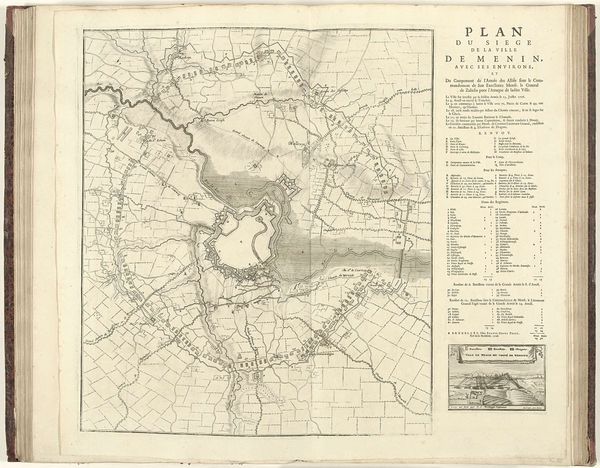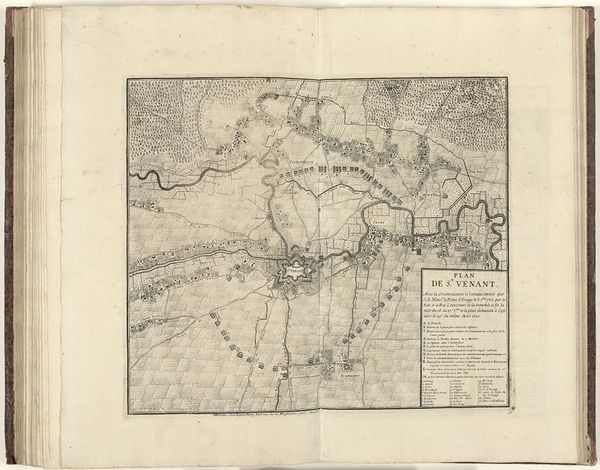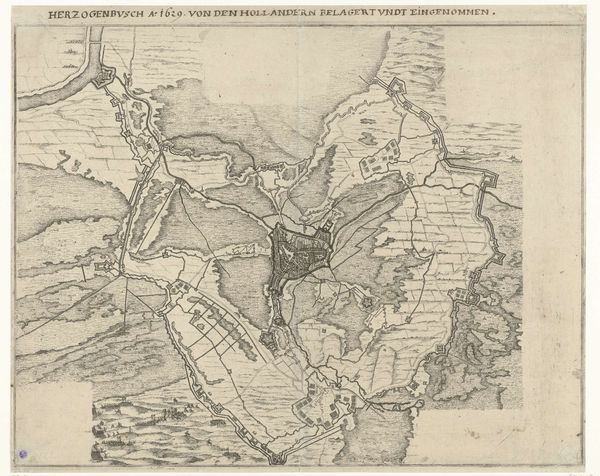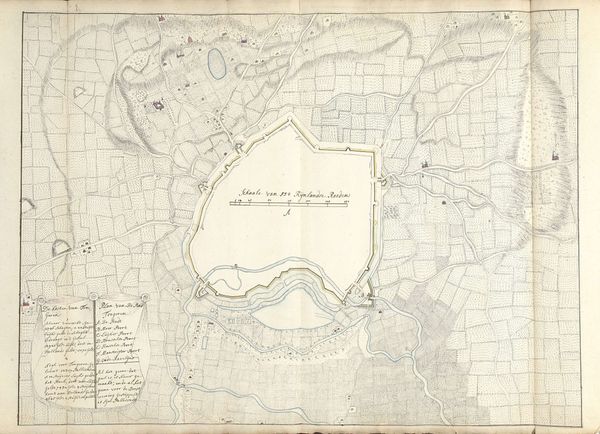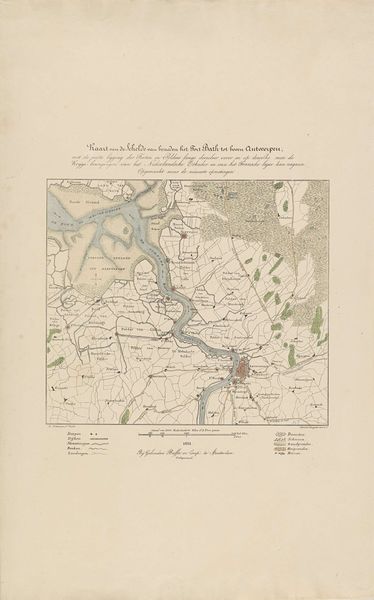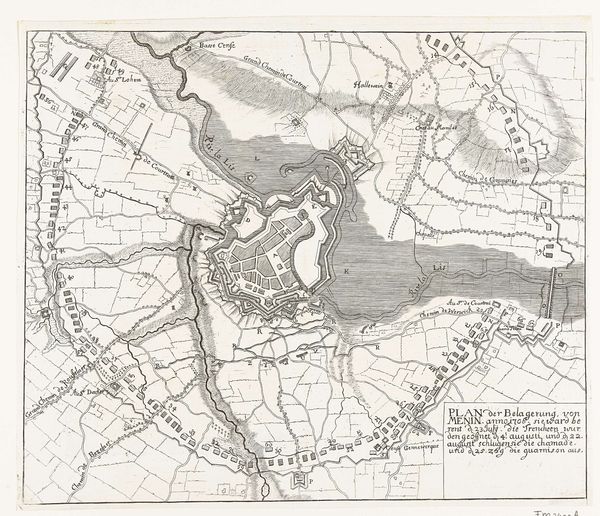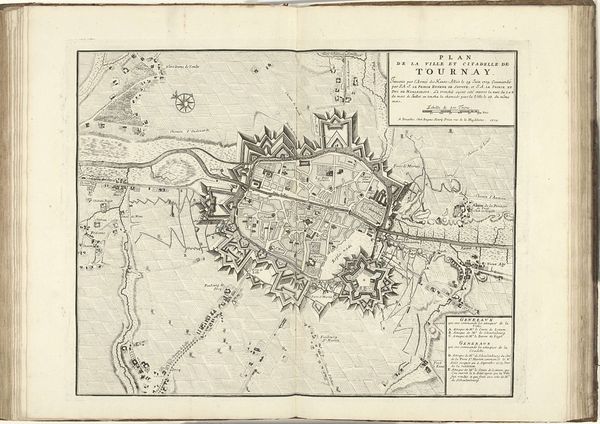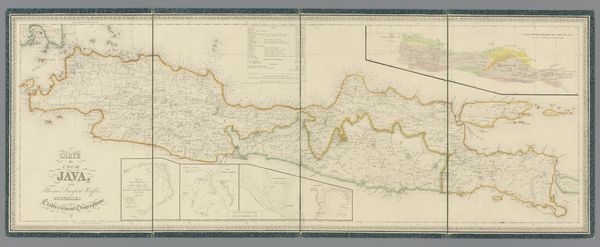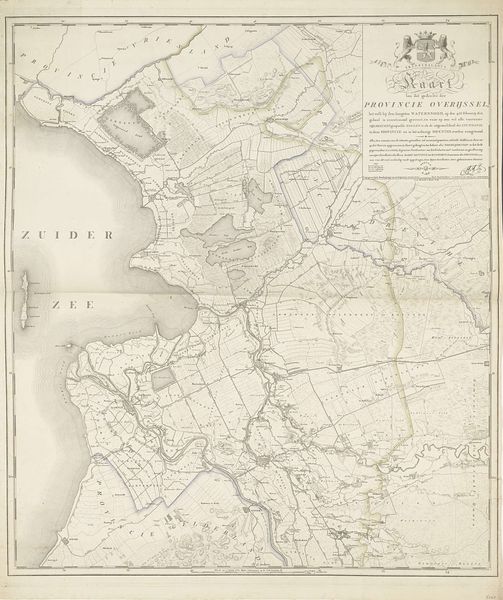
print, etching, engraving
#
aged paper
#
baroque
# print
#
etching
#
old engraving style
#
geometric
#
line
#
cityscape
#
history-painting
#
engraving
Dimensions: height 530 mm, width 620 mm
Copyright: Rijks Museum: Open Domain
Editor: So, here we have Jacobus Harrewijn's 1706 etching, "Beleg van Menen, 1706," depicting the siege of the city. It's incredibly detailed, but also feels quite...distant. I'm struck by the objective point of view, like a bird's-eye view almost devoid of human presence besides what we can gather of military and infrastructural placements. How do you interpret this work, seeing it today? Curator: It's fascinating to consider how "objectivity" functions within such a charged image. This isn't just a map; it's a record of a violent power struggle. We need to ask, whose perspective is truly represented here? Whose lives are being mapped and manipulated? How does this imagery serve to sanitize what the real implications of violence in this historic event really looked like? Editor: That’s a really interesting way to put it – “sanitize.” It's true; it almost makes war look like urban planning. Curator: Exactly. This distance naturalizes violence and reinforces colonial power structures by reducing human conflict to a set of strategic placements. Do you see the detailed key off to the side? Think of all the nameless, faceless people implied by each one of those marks representing troop placements, artillery...it's not dissimilar to present-day digital surveillance and geographic targeting that is used for drone warfare. Editor: Wow, I hadn't thought of it in terms of surveillance...that definitely changes my perspective. Seeing it as an instrument of power and control. Curator: And who is its intended audience? What does it mean to document, even celebrate, the capture and subjugation of a population and location in such an ostensibly neutral form? Editor: It's a lot to consider. I initially saw it as just a historical document, but I now realize its more nuanced place as a document of power. Curator: Precisely, seeing it through that lens allows us to understand art's role in shaping our understanding of conflict and the forces that determine those conflicts.
Comments
No comments
Be the first to comment and join the conversation on the ultimate creative platform.
